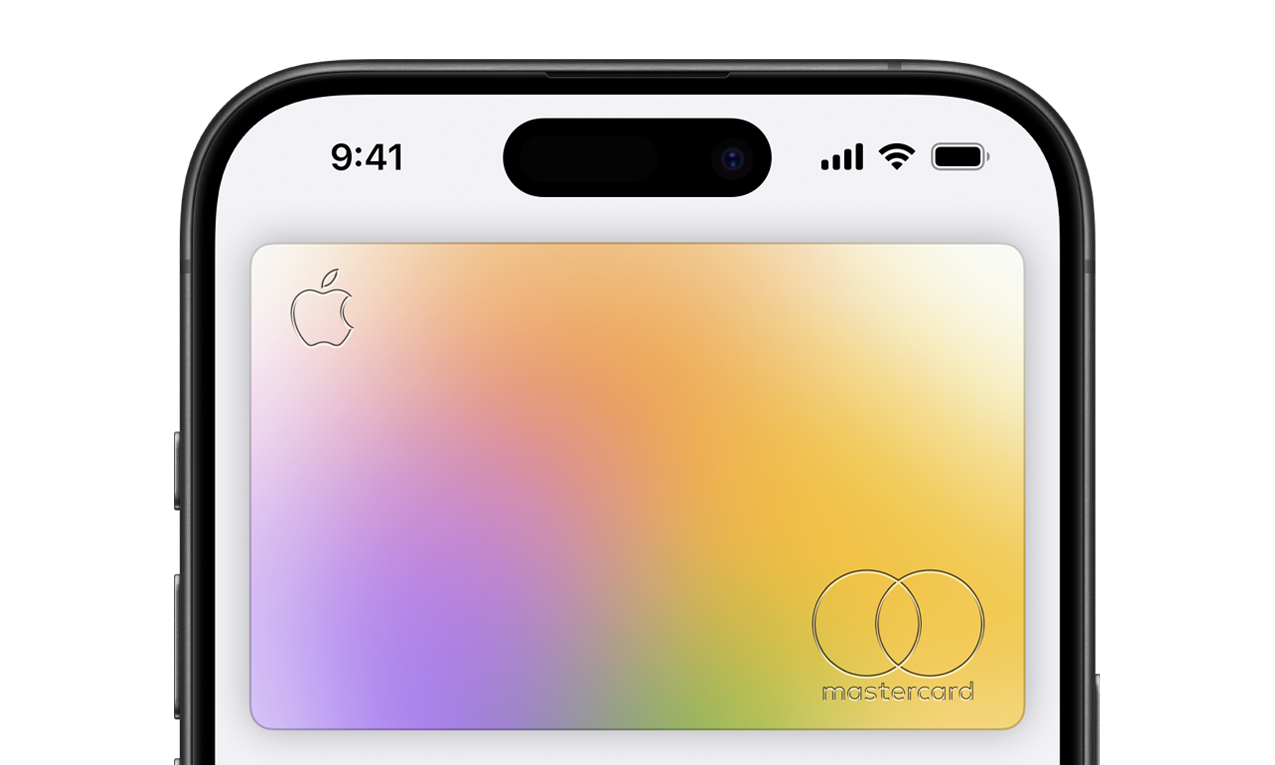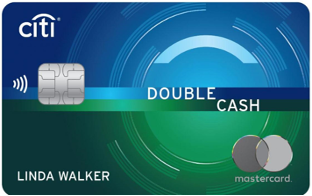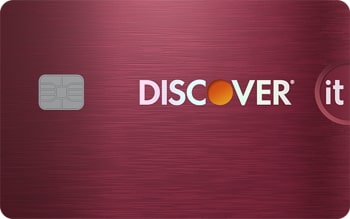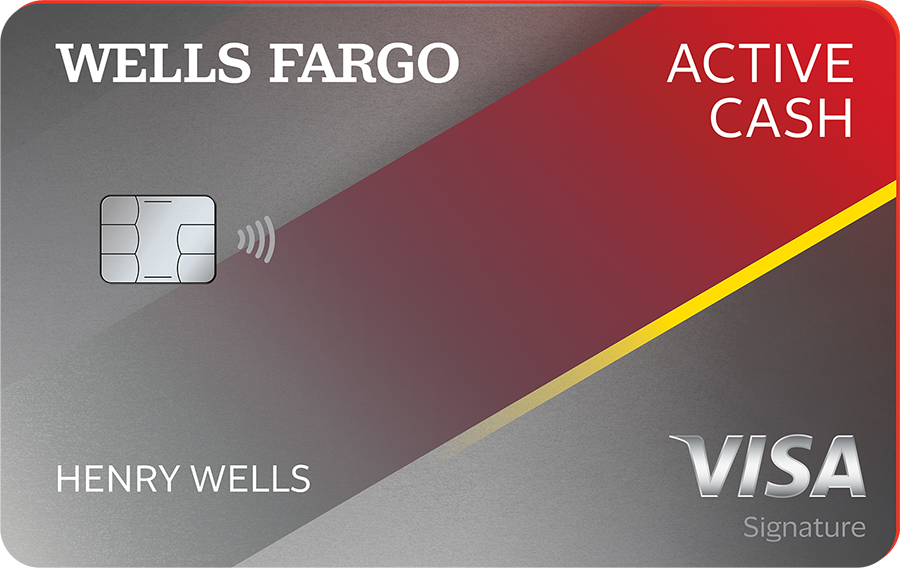Apple Card Review: Extra Rewarding for Apple Fans
The Bottom Line
4.5
It's not a game-changer, but the card does offer some intriguing features, including the ability to finance expensive Apple products with an interest-free payment plan.

Rates, fees and offers
Rates, fees and offers
Annual fee
No Fees*
Rewards rate
1%-3%
Bonus offer
None
Intro APR
N/A
Ongoing APR
APR: 17.74%-27.99%, Variable
Foreign transaction fee
0%
More details from Apple
More details from Apple
- Variable APRs for Apple Card range from 17.74% to 27.99% based on creditworthiness. Rates as of November 1, 2025. Existing customers can view their variable APR in the Wallet app or card.apple.com.
- Approval Odds are statements and determinations by NerdWallet and not those of Goldman Sachs Bank USA.
- See if you’re approved for Apple Card with no impact to your credit score.¹
- Created by Apple and built for iPhone. Designed to be private and secure.
- No fees.² No annual fees, foreign transaction fees, late fees, or any other fees.³
- Unlimited Daily Cash back on every purchase, every day. It’s real cash⁴ that never expires or loses value.
- Now, you can automatically grow your Daily Cash when you open a high-yield Savings account.⁵ Savings provided by Goldman Sachs Bank USA. Member FDIC.
- Apple Card Family allows you to share the benefits with anyone you call family.⁶
- Apple-designed, laser-etched titanium card that is accepted all over the world with the Mastercard payment network.
- 3% back on anything you buy from Apple, and at select merchants like Uber, Nike, Walgreens and more when you use Apple Card with Apple Pay.⁷
- 2% back when you use Apple Card with Apple Pay. Apple Pay is accepted at over 85% of retail locations in the U.S.
- Apply in minutes and use it right away.⁸
- ¹²³⁴⁵⁶⁷⁸Select “View Rates and Fees” to see offer, benefit terms, and important disclosures.
Pros and Cons
Pros
No annual fee
High rewards rate
Cash rewards
Cons
No bonus offer
Restricted 0% intro APR offer
Detailed Review
When Apple announced in 2019 that it was launching a new Apple-branded credit card, some fans may have hoped it would reinvent how we pay for things. But the product's features make it the credit card equivalent of a Red Delicious: bright, shiny and appealing, if somewhat bland once you take a bite.
The $0-annual-fee Apple Card earns 3% cash back on Apple purchases, as well as at a handful of eligible merchants and through select apps, and 2% back on everything else — but only if you make your purchases via Apple Pay on your iPhone. If you use the physical version of the card, which is an option at retailers that don’t accept Apple Pay, you’ll earn only 1% cash back.
As far as rewards rates go, what the Apple Card offers is pretty standard. Still, despite a crowded market of cash-back cards, consumers may be able to find room in their digital wallets for this one, especially for pricey Apple purchases.
In January 2026, Apple and JPMorgan Chase announced that the bank plans to be the new issuer of the Apple Card. Existing cardholders will be transitioned to the new issuer in about 24 months. For now, it's possible to continue using the card in the same manner.
Apple Card: Basics
Card type: Cash back.
Annual fee: $0.
Sign-up bonus: None.
Rewards:
3% cash back on Apple purchases and at select merchants like Nike, Uber, Walgreens and more, when you use the Apple Card with Apple Pay.
2% cash back on all other purchases when you use the Apple Card with Apple Pay.
1% cash back on purchases made with the physical Apple Card.
Redemption options: Rewards are earned in the form of Daily Cash, which can be:
Redeemed for a statement credit.
Sent to Apple Cash for spending or sending to others through the iPhone's Wallet app.
Deposited into Apple Savings, an interest-earning account in Apple Wallet.
Interest rate: The ongoing APR is 17.74%-27.99%, Variable. (The card does allow you to pay for Apple purchases over time, interest-free, with Apple Card Monthly Installments, although you must opt-in to the program. Other terms may apply.)
Foreign transaction fee: None.
Other benefits:
Share an account with others in your household with Apple Card Family.
Get a six-month free trial of Uber One when you sign up using your Apple Card with Apple Pay to enroll. (The Uber One subscription will automatically renew at $9.99 per month once the free trial is over.)
Compare to Other Cards

Benefits and Perks
Higher cash-back rates for Apple Pay purchases
The Apple Card earns a respectable 2% back on purchases made through Apple Pay, and 3% back at participating merchants through Apple Pay.
Here's a quick look at the Apple Card's rewards categories:
Rewards | Categories |
|---|---|
3% cash back |
|
2% cash back | All other purchases made via Apple Pay. |
1% cash back | All purchases made with the physical Apple Card. |
Get preapproved without affecting your credit score
You can see whether you qualify for the Apple Card — and what terms you qualify for, like credit limit and interest rate — without a hard credit pull. If you’re happy with the offer, you can accept it and continue with your card application. At that point, you will be subject to a hard pull, which can temporarily affect your credit scores.
Instant access to rewards
Cash-back rewards, called Daily Cash, are credited daily as the name implies. Daily Cash can be used more or less immediately. Unlike many other rewards cards, you don't need to wait until your billing cycle closes.
You can choose a few ways to redeem your Daily Cash. The default is a statement credit toward your Apple Card balance. You can also opt to spend your rewards by sending them to Apple Cash in your Wallet app. From there, you can pay your Apple Card bill, shop with Apple Pay or send money to someone else. If you’d prefer to stash away your Daily Cash, you can set up an interest-earning Apple Savings account, which is provided by Goldman Sachs, and park your rewards there.
Ability to share card account
With Apple Card Family, you share one card account with up to five other people. You can designate a co-owner, who is equally responsible for paying the bills, and authorized users (called "participants"). Account activity is reported to all three major credit bureaus for co-owners, as well as for participants who are 18 or older and opt in to credit reporting. Each member of an Apple Card Family group earns Daily Cash through their purchases and gets to keep the cash back they earn. This is unlike many other authorized user arrangements, where earned rewards go to the primary cardholder.
Pay for Apple purchases over time
When you use your Apple Card in Apple stores, on the Apple website or in the Apple Store app, you can choose to pay over time with Apple Card Monthly Installments. This is an interest-free payment plan, and you’ll still earn 3% Daily Cash back on the total purchase upfront. The monthly installment is added to the minimum payment due on your card. Note, however, that these payment plans are not automatically applied to your Apple purchases; you must actively choose to use them.
No late fees
Apple says you won't be charged a penalty rate or a late fee should you miss a payment. The company does, however, note that "late or missed payments will result in additional interest accumulating toward the customer’s balance." Regardless, NerdWallet recommends making payments in full and on time because late payments can hurt your credit scores.
MORE NERDY PERSPECTIVES
 | The Apple Card has some cool features, but at its core it's a pretty basic cash-back card. That's fine if you use Apple Pay frequently, but if you don't, there are better options. The list of merchants that earn 3% back is still pretty small, and new merchants don't seem to get added that frequently. Sara Rathner, writer/spokesperson, credit cards |
 | Apple Card is a fine option if you're already using Apple Pay for all your purchases, or if you could do so. But if a significant amount of your spending takes place outside the Apple Pay system, you're better off with a traditional card that pays 2% everywhere. Paul Soucy, content director, credit cards and travel rewards |
Drawbacks and Considerations
Lower cash-back rate with physical card
The 2% cash back on most purchases matches many of the highest flat-rate cash-back cards on the market. But it comes with a big asterisk, because you must use Apple Pay to get elevated rates. Some major retailers, including Walmart, don’t accept Apple Pay. This is to say nothing of the much smaller merchants where you may run into issues: food trucks, mom-and-pop stores, bodegas and others simply may not be equipped to handle Apple Pay.
That leaves the physical card as your only option. As nicely designed as it is, it earns only 1% back on purchases. That's just not competitive when the industry standard is at least 1.5%.
In October 2024, the Consumer Financial Protection Bureau fined Apple and Goldman Sachs nearly $90 million, alleging various regulatory and customer service issues with the Apple Card.
Limited 3% Daily Cash categories
You may pony up for a new MacBook Pro once every few years, but if your everyday spending doesn’t happen at one of the participating merchants that earn 3% Daily Cash, other cash-back cards may make more sense. Maybe the bulk of your spending is on groceries and gas, but you don’t frequent Exxon stations. The Blue Cash Preferred® Card from American Express earns 6% cash back* at U.S. supermarkets, on up to $6,000 a year in spending (then 1%); 6% cash back on select U.S. streaming subscriptions; 3% cash back at U.S. gas stations and on transit (including such things as taxis, rideshares, parking, tolls, trains and buses); and 1% cash back on all other purchases. Terms apply (see rates and fees). Or perhaps you hit the town regularly? The Capital One Savor Cash Rewards Credit Card earns 3% cash back on dining, grocery stores and entertainment, including streaming services; 5% cash back on hotels, car rentals and vacation rentals booked through Capital One Travel; and 1% elsewhere.
Read through Nerdwallet's full list of best credit cards for more options.
Few upfront incentives
Unlike many other cash-back credit cards, the Apple Card doesn't offer a rich sign-up bonus worth hundreds of dollars. Occasionally, the card will feature modest welcome offers, but they're infrequent and unpredictable. Compare that to what you'd get with a competitor like the Wells Fargo Active Cash® Card. It earns 2% back on every purchase, everywhere, no Apple Pay necessary — and it comes with a sign-up bonus: Earn a $200 cash rewards bonus after spending $500 in purchases in the first 3 months.
Also, while the card does feature interest-free financing options for multiple Apple-branded devices and accessories, there’s no 0% introductory APR offer on other kinds of purchases. The ongoing APR is 17.74%-27.99%, Variable. This is not an ideal card if you need to carry a balance. A card with a lengthy 0% intro APR offer on all purchases would be a better option.
How To Decide If It's Right For You
If you have some Apple product purchases in mind and use Apple Pay frequently at checkout, the Apple Card's instant access to earned Daily Cash is appealing. But other cash-back cards may be more rewarding, depending on where you shop the most, especially if you don’t use Apple Pay often.
*Cash Back is received in the form of Reward Dollars that can be redeemed as a statement credit or at Amazon.com checkout.
Sign-Up Bonus
Earn 2% cash back on all purchases without the requirement to use Apple Pay. The card also offers a sign-up bonus and 0% APR promotion for purchases and balance transfers.
Looking For Something Else?
Methodology
NerdWallet reviews credit cards with an eye toward both the quantitative and qualitative features of a card. Quantitative features are those that boil down to dollars and cents, such as fees, interest rates, rewards (including earning rates and redemption values) and the cash value of benefits and perks. Qualitative factors are those that affect how easy or difficult it is for a typical cardholder to get good value from the card. They include such things as the ease of application, simplicity of the rewards structure, the likelihood of using certain features, and whether a card is well-suited to everyday use or is best reserved for specific purchases. Our star ratings serve as a general gauge of how each card compares with others in its class, but star ratings are intended to be just one consideration when a consumer is choosing a credit card. Learn how NerdWallet rates credit cards.
Frequently asked questions
Is the Apple Card hard to apply for?
Is the Apple Card hard to apply for?
You can apply for the Apple Card through the Wallet app in minutes. If approved, you’ll be shown the card terms you qualify for, including credit limit and APR. If you accept those terms, you can continue with the application process.
What is the credit limit on the Apple Card?
What is the credit limit on the Apple Card?
Your credit limit is determined by the information you provide in your application. Goldman Sachs, the issuer of the Apple Card, uses your credit score, income, debt obligations and other information when deciding whether to accept your application.
Does applying for the Apple Card hurt your credit score?
Does applying for the Apple Card hurt your credit score?
The Apple Card offers a preapproval, meaning you can see if you’d qualify for the card without affecting your credit score. If you accept the offer and proceed with the application, you’ll be subject to a hard credit inquiry, which can temporarily lower your score.
What’s the difference between Apple Pay and the Apple Card?
What’s the difference between Apple Pay and the Apple Card?
Apple Pay is a payment service you can use to make contactless purchases. You can use Apple Cash, the Apple Card, or any other credit or debit cards with Apple Pay. You must add cards to your Wallet app to use them with Apple Pay.
The Apple Card is a credit card. It can be used with Apple Pay from the Wallet app. You can also use the physical version of the card if a merchant doesn’t accept Apple Pay.
Who qualifies for the Apple Card?
Who qualifies for the Apple Card?
To qualify for the Apple Card, you must be a U.S. citizen or resident who is at least 18 years old. You need an Apple ID associated with an iCloud account. Two-factor identification must be turned on for your Apple ID. From there, your eligibility will be determined based on your credit history and other personal financial information.
About the author

Sara Rathner
Senior Writer/Spokesperson



